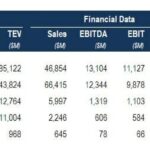Working with extensive data in Excel often involves managing multiple worksheets with similar information. Comparing these sheets to identify duplicate records can be challenging, particularly when data is scattered across various columns and rows. This guide provides a comprehensive overview of effective methods to compare Excel files for duplicates, ensuring data accuracy and efficiency.
Methods to Compare Excel Files for Duplicates
Several techniques can be employed to pinpoint duplicate entries across Excel worksheets:
1. Leveraging Excel Functions: VLOOKUP, COUNTIF, and EXACT
Excel offers built-in functions designed for data comparison:
- VLOOKUP: This function performs a vertical lookup to find a specific value in the first column of a range and returns a corresponding value from another column in the same row. Using
FALSEas therange_lookupargument ensures an exact match when searching for duplicates. Referencing a separate sheet in a formula is achieved by using the sheet name followed by an exclamation mark and the cell or range, like this:Sheet2!A1:A10. - COUNTIF: This function counts the number of cells within a range that meet a specific criterion. To find duplicates, use
COUNTIFto count occurrences of a value from one sheet within the range of another sheet. A count greater than zero indicates a duplicate. - EXACT: This function compares two text strings and returns
TRUEif they are identical (case-sensitive), andFALSEotherwise. While it doesn’t search across a range, it efficiently compares specific cells across different sheets for exact matches.
2. Utilizing Conditional Formatting
Conditional formatting allows you to visually highlight duplicate entries. By applying a rule based on a formula like =COUNTIF(Sheet2!$A$1:$A$10,A1)>0, cells in one sheet that have duplicates in another sheet will be formatted differently (e.g., highlighted in yellow). This provides a clear visual indication of duplicate data. The Conditional Formatting Rules Manager allows for easy modification and application of this rule to other sheets.
3. Harnessing the Power of Power Query
Power Query, a robust data transformation and preparation tool, enables efficient duplicate identification. Import data from both worksheets into separate tables, then merge these tables based on the key columns containing potential duplicates. Choose an “Inner” join to retain only matching rows, effectively isolating duplicates. Finally, load the results into a new worksheet for further analysis.
4. Exploring External Tools and Add-ins
Specialized tools like Microsoft’s Spreadsheet Compare offer side-by-side workbook comparisons, highlighting differences and duplicates. Various add-ins designed for duplicate removal, such as “Duplicate Remover,” automate the process and enhance efficiency. These tools provide advanced features beyond Excel’s built-in functionalities.
5. Performing Visual Checks
For smaller datasets, manually comparing data by arranging windows side-by-side can help spot duplicates. While less efficient for large datasets, visual inspection allows for direct comparison and identification of inconsistencies beyond exact matches.
Best Practices for Data Preparation
To optimize the accuracy of duplicate detection:
- Consistent Data Structure: Ensure both sheets have identical column headers and data arrangement.
- Data Normalization: Use consistent formatting, capitalization, and data types to prevent discrepancies due to minor variations.
- Remove Blanks: Eliminate unnecessary blank rows or columns that might interfere with comparisons.
Handling Errors and Inconsistencies
Address potential data inconsistencies by:
- Data Type Consistency: Ensure uniformity in data types within columns (e.g., avoid mixing text and numbers).
- Formatting Consistency: Standardize formatting for dates, numbers, and other data types.
- Data Validation: Check for missing or incorrect entries and rectify them.
- Standardization: Resolve inconsistencies in abbreviations or naming conventions.
Conclusion
Comparing Excel files for duplicates is crucial for maintaining data integrity. By employing the techniques outlined in this guide, from leveraging built-in functions to utilizing powerful tools like Power Query, you can efficiently identify and manage duplicate data, ensuring accuracy and efficiency in your Excel workflows. Remember to prepare your data appropriately and address potential inconsistencies for optimal results.
